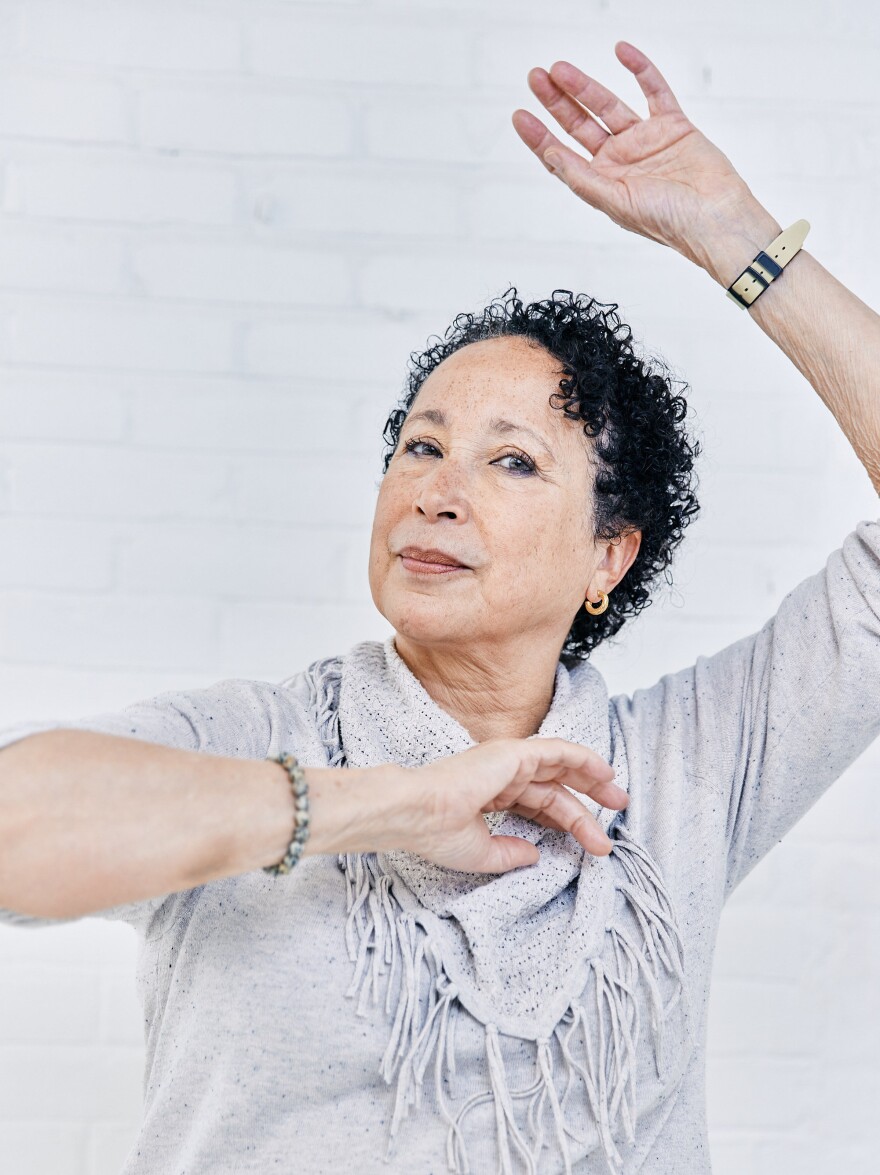When Virginia Johnson auditioned to be a ballerina for the newly created Dance Theatre of Harlem in 1969, she was already conditioned to steel herself against rejection.
Her longtime teacher, Mary Day, had warned her that major ballet companies were not ready for a Black dancer, especially one as tall as she was.
So when Arthur Mitchell, a co-founder of the dance company, told her that he "didn't like my dancing, didn't think there's any hope for me, but said we'll see what we can do," she did what she had always done: kept her head up, and kept dancing.
Mitchell was a pioneer in his own right. Already a star at New York City Ballet, he was one of the few Black principal ballet dancers in the world. But he wanted more: a school to expose other Black and Latino kids to ballet and a professional company to offer the most talented a place to excel.
It turned out that Johnson's training had been very different from the style that Mitchell preferred. Despite that, Johnson went on to become a principal ballerina for DTH - the highest rank in a dance company - for 28 years.

She starred in pieces as wide ranging as Giselle and A Street Car Named Desire, and then pivoted to arts reporting before returning to the dance theatre as artistic director.
This week, after more than a decade in that role, Johnson retires from Dance Theatre of Harlem.
Part of her job involved getting the traveling company back on stage and back on solid financial footing after it shut down for many years.
On July 1, DTH's current choreographer, Robert Garland, will take over her job.
This interview has been edited for length and clarity. Some of the excerpts include some quotes from the interview that were not aired in the broadcast version.
Michel Martin: Talk to me about those early days. The shocker for me is that Arthur Mitchell didn't like you. I'm like, what? Why? Because you're actually a little bit tall for a prima ballerina.
Virginia Johnson: I'm very tall. I was a very tall Giselle. I was trained in the Vaganova School, which is a very classically and very placed [style]. There's a beauty to being still. Arthur Mitchell came from George Balanchine's New York City Ballet, which is where he created the style of dancing called neoclassical ballet, which is about dynamic movement and covering space and not being static — not making poses, but making movement. And so, yeah, you know, it was horribly deflating and painful when he was like, "Oh, I'm not sure about you." But it was also an opportunity to learn something and to be challenged by something new.
Tell me about those early days. Did you feel like pioneers?
We did feel like pioneers. We did very much feel like we were crusaders, that we had an important message, that we had to change people's minds. And those early years of Dance Theatre of Harlem were extremely — it was a lean time for us. It was a small company. We did a lot of bus and truck tours. We were going into small cities. People were thinking they were going to see the Harlem Globetrotters.
No.
Because it was a bunch of tall, skinny Black people and they couldn't imagine that we were ballet dancers.

Are you serious?
We would be in the airport and it's like, are you guys the Harlem Globetrotters? So there was a lot of convincing. We had to band together. We had to be strong and we had to be excellent.
And Arthur Mitchell was a very tough taskmaster, and he drove us to become dancers that we may never have become without the imperative, you know: If you're a Black person in America, you can't be good. You've got to be better than the best because people are not going to accept you. And so he very much brought that idea into, okay, we're in ballet and we're not just being ballet dancers. We're going to be the best ballet dancers.
The other thing that the Dance Theater of Harlem did that I think people may not understand, even if they've seen it, is that even the language of ballet is very white. There's like the so-called white ballets. And that's not because the people are white. Why are they called the white ballets?
Because the costumes are white. But so yes, the thing that people get stuck with is a very narrow definition of what ballet is. And certainly ballet started in the court of Louis the 14th. You know, but there's Russian ballet and there's Italian ballet. Ballet is everywhere. Ballet speaks to people because it's an art form of elevation. And elevation is a human impulse. Ballet got refined and sliced and diced and came to be this thing that was about everybody looking exactly alike and everybody having the same physical shape, having the same timing, the same unity of...
Precision
Precision.
It was almost like kind of a militaristic approach to it, albeit on centering the female body and a specific type of femininity and etherealness and so forth.
Exactly

You had an incredible career of 28 years as a dancer. I think people even outside of dance can understand the toll that it takes on your body. How did you do that?
Well, it was love. Ballet is very hard. And you have to knock yourself out every single day. And yes, there is a certain amount of pain. There's certain amount of physical and mental anguish to that. But I was getting to do what I love to do. And the challenge of becoming better than I was yesterday was something that I use like candy for me.
Anything that remains a pain point for you or something undone or anything you wish you had done that you weren't able to do?
This is going to sound really very egotistical, but I wish I had had a lot more confidence in myself because I would have been a greater dancer than I was.
How did that understanding come to you?
I had to get old. I was so full of doubt about every single thing that I did and that I really did spoil things for myself. But I did keep trying. And I finally got old enough that I was doing performances. You know, I was in my late thirties when Giselle came to me, very old. So I at least had that little bit of awareness, self-awareness that I was like, okay, you're getting to do this, you sure better do it.
What made this the time to step away?
Oh, I'm old.
You're not old. You're seasoned.
No, it was because this company needs more challenge, needs a new challenge, needs a vision. Robert Garland, we danced together in the day with the company. But Robert Garland is an amazing choreographer. He's somebody who's got his pulse on American culture. And when I talk about American culture, I'm talking about African-American culture, classical American culture, American culture as we want it to evolve to be, which is representative of the people who are in this nation. And Robert is a young man who has access to that kind of vision. So it wasn't about me stepping down. It was about what does this organization need now to really keep thriving.
The digital version of this story was edited by Lisa Lambert. contributed to this story
Copyright 2023 NPR. To see more, visit https://www.npr.org.




